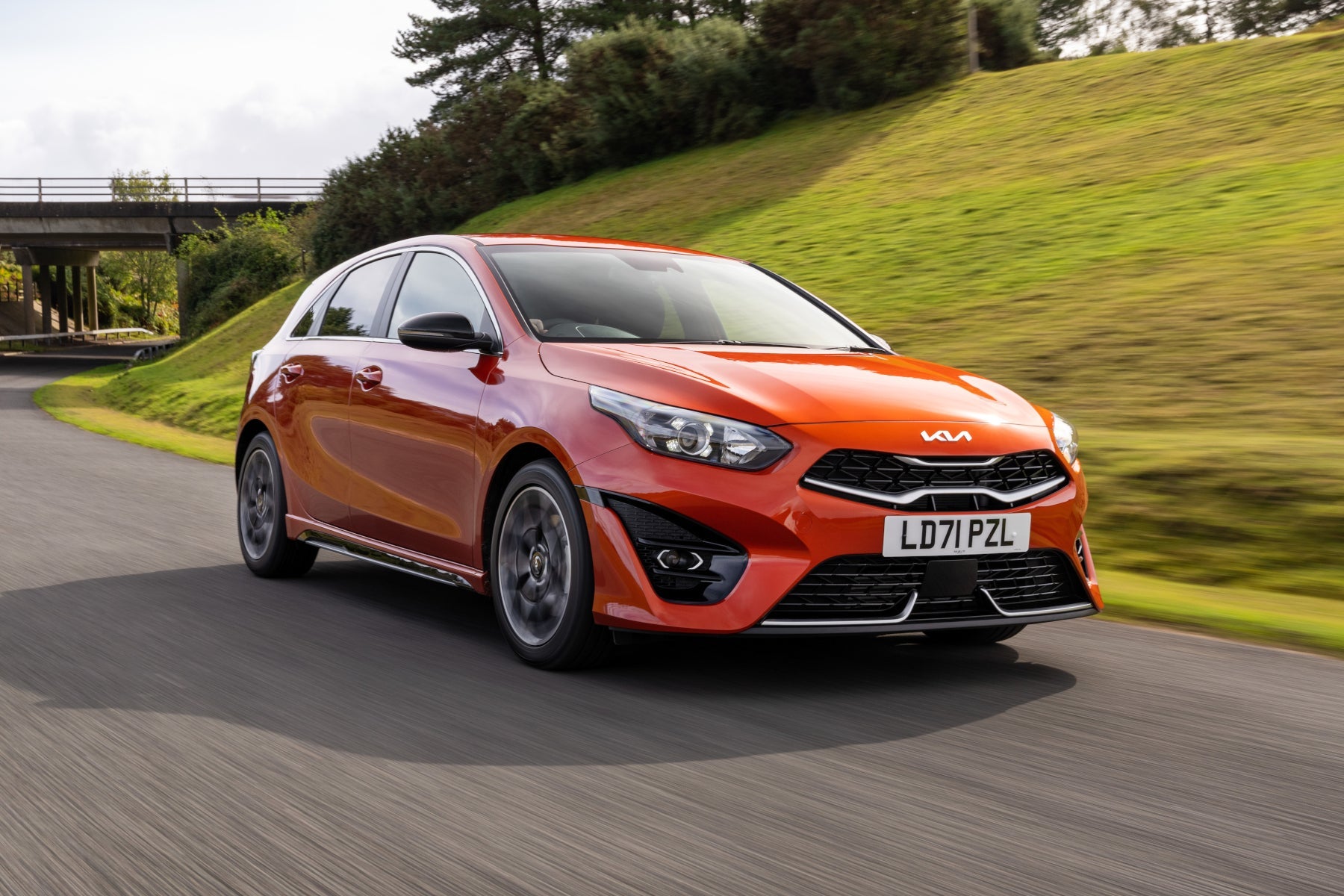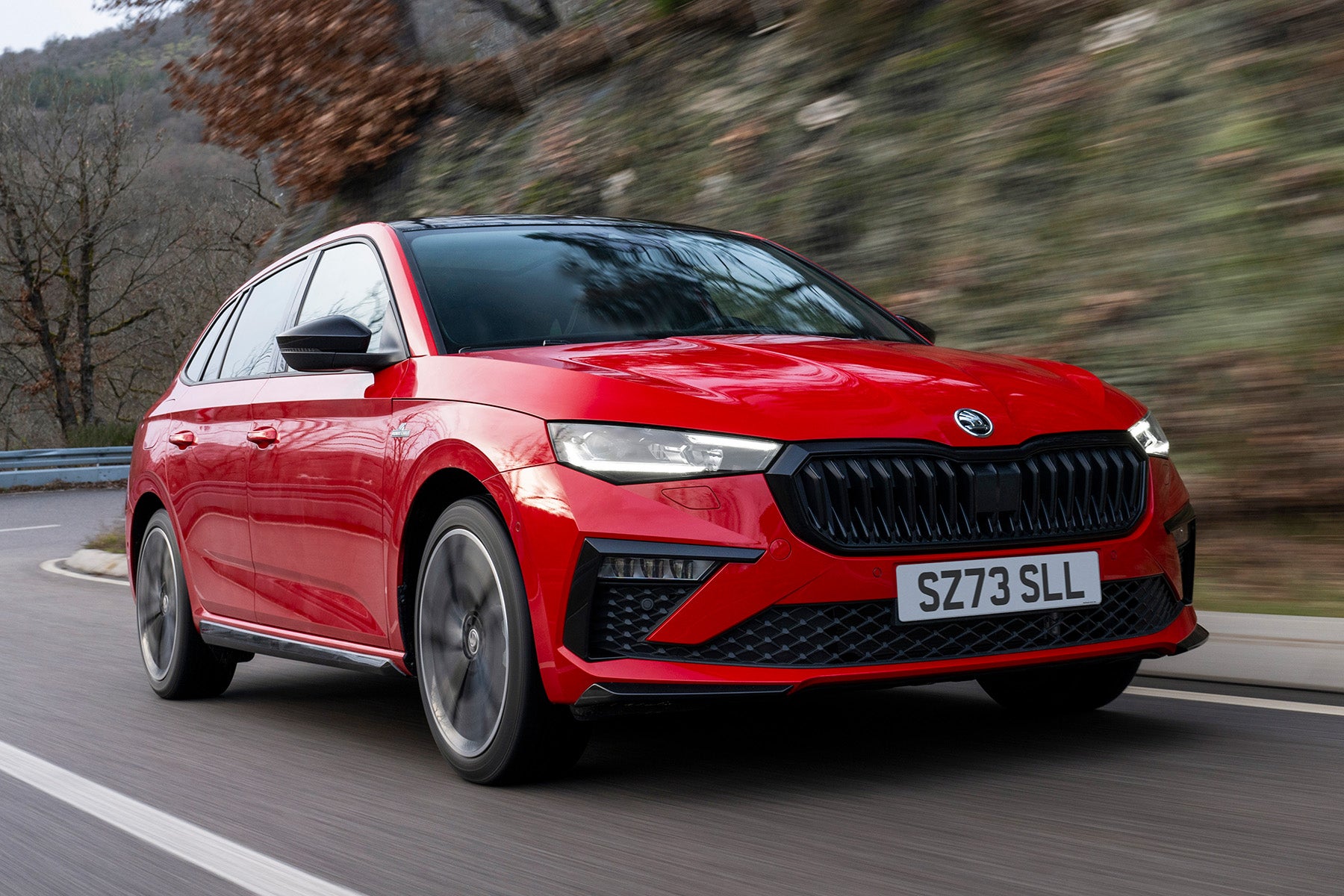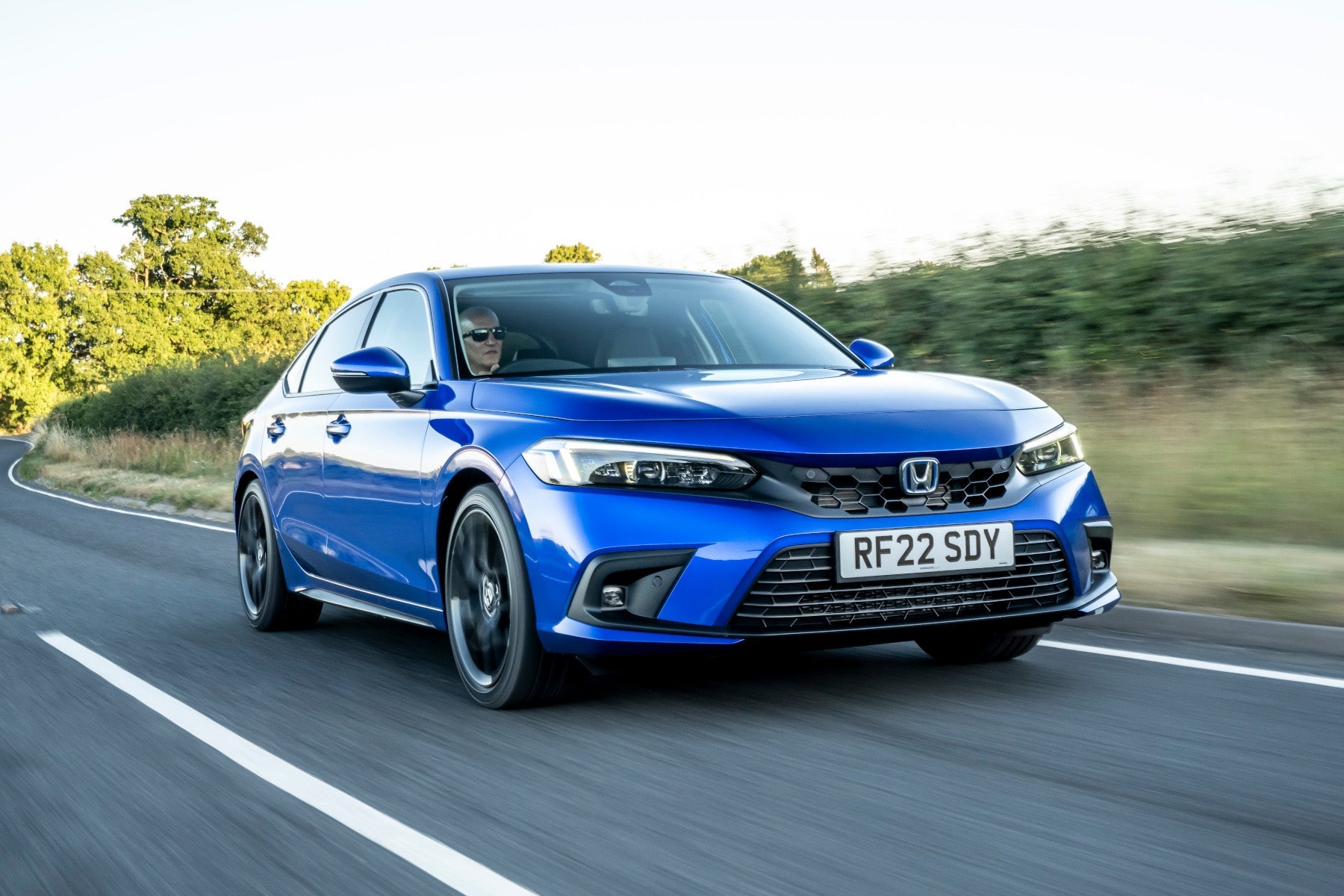Hyundai i30 Review 2024
Written by Andrew Brady
Quick overview
Pros
- Better value for money than a Volkswagen Golf
- Comfortable ride quality
- Lots of standard safety equipment (including a spare wheel)
Cons
- Not as cheap as it once was
- Doesn't handle as well as rivals
- Engines could be more efficient
Overall verdict on the Hyundai i30
"The Hyundai i30 now only comes with mild-hybrid engines. It's still not particularly exciting, and rivals are better to drive, but it's a solid, comfortable and refined family hatchback with an excellent warranty."
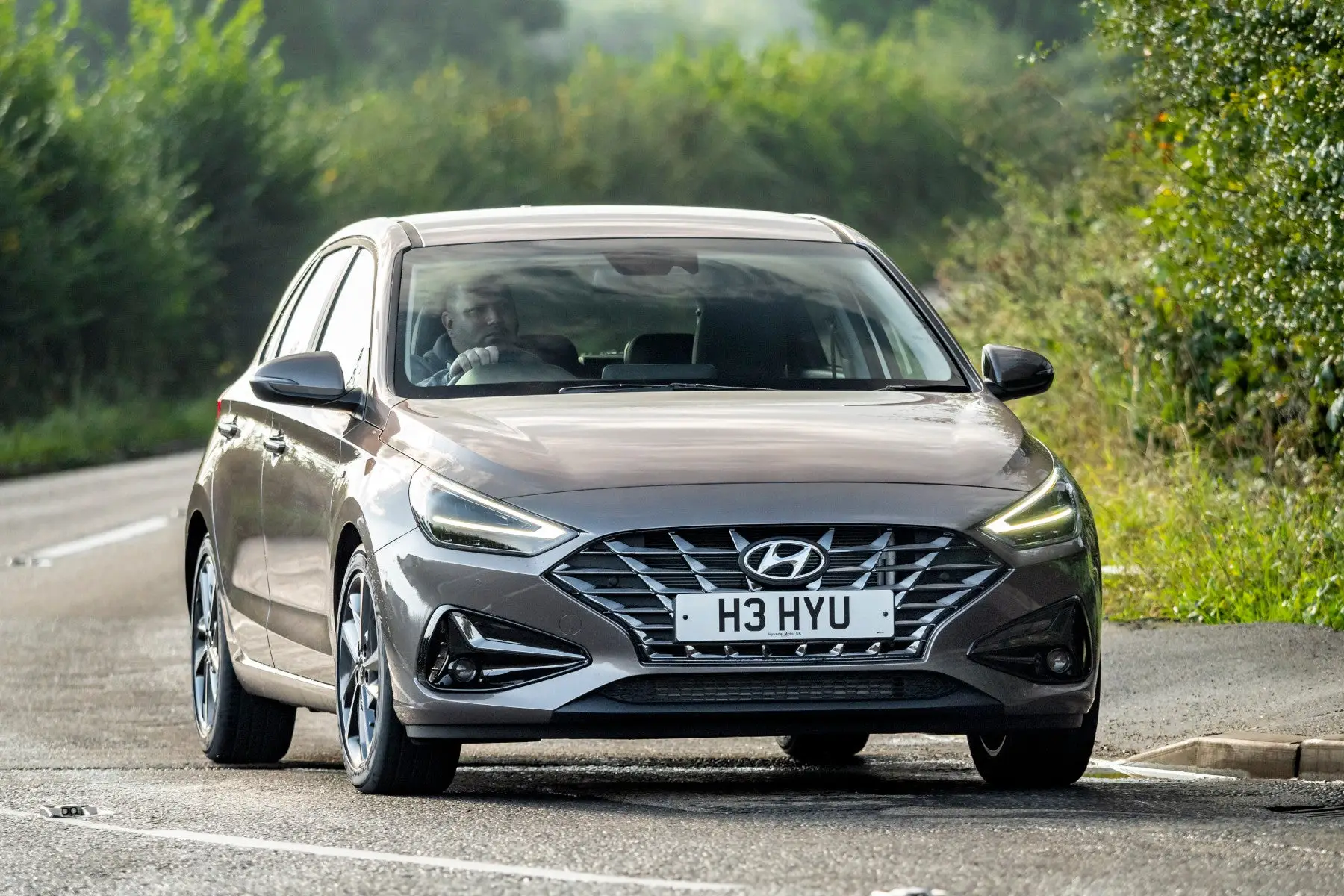
Hyundai has been churning out some exciting new models of late, with the superb i20N hot hatchback and the striking Tucson SUV being the most notable additions. It's no surprise, then, that the humble i30 hatchback can go a little unnoticed. We'll address that in this full review of the Hyundai i30.
It's not that the Hyundai i30 is a bad car - far from it, in fact. It's just that it's never been particularly interesting. It's also easy to forget in a sea of desirable and talented rivals such as the Ford Focus, Volkswagen Golf and Mazda 3.
Still, the i30 is worthy of your consideration, and the updates added in late 2020 give it more up-to-date technology, refreshed styling, and some more efficient mild-hybrid engines.
Previously, the i30 undercut its platform-sharing sibling, the Kia Ceed, on list price terms. Now, however, Hyundai has removed the cheapest trim levels due to lack of popularity, and it's a little bit more expensive than the Ceed. While that means it isn't the value offering it once was, it does mean that even the entry-level car has plenty of equipment - and those cheap base models weren't exactly desirable.
The i30's interior definitely looks more modern and upmarket thanks to the updates, particularly on higher spec models with the new 10.25in infotainment touchscreen mated to a digital instrument display. It's well-made with decent materials, but is still a bit dark and lacking character.
Hyundai has also altered the i30's engine range, with the 1.6-litre diesel no longer offered. Instead, a pair of petrols - the 1.0-litre three-cylinder and a 1.5-litre four-cylinder - come with 48-volt mild hybrid tech, which allows the engine to be switched off when coasting or coming to a stop to save fuel.
The Hyundai i30 is pretty soft in the way it drives, soaking up bumpy road surfaces and wafting along in comfort. Even bigger wheels won’t really upset the ride. On the downside, it doesn’t feel very agile in the bends, but it’s fairly planted and feels safe to drive.
Talking of safety, the i30 scores highly on that front. There are loads of safety assist systems fitted as standard, even on the most affordable models. Lane guidance systems will nudge your steering if you stray from your lane and keep you centred within the lane, while a driver attention alert will tell you to take a break if you appear to be getting tired. There's also the usual autonomous emergency braking, and even a feature that bongs to let you know that the car in front has moved off.
There are Isofix points for fitting child seats in the back of the Hyundai i30, which is pretty easy thanks to wide-opening rear doors. Space in the back is decent enough, but there are roomier alternatives such as the SEAT Leon. The boot is slightly bigger than the class average, however, while an adjustable boot floor and dropping rear seats help versatility.
No one’s going to get excited about the Hyundai i30, but it’s a very competent car that puts the focus on comfort and value for money. A transferable five-year, unlimited mileage warranty makes it a sensible used proposition, too.
While the Hyundai i30 perhaps doesn’t excel in any particular area, it also isn’t sub-par. It just quietly does the job, saving you money thanks to its low running costs and affordable used prices. We like how comfortable it is and the amount of kit you get as standard. It’s certainly an easy car to recommend, even if it lacks the showroom appeal of a Volkswagen Golf.
Looking for a used car for sale? We've got 100s of Hyundai Approved Used Cars for Sale for you to choose from, including a wide range of Hyundai i30 cars for sale. If you're looking for the older version, you need our Hyundai i30 (2012-2017) review.
Is the Hyundai i30 right for you?
The Hyundai i30 isn’t a car that’s going to make a statement about your success in life. It won’t attract admiring glances on your driveway like a Volkswagen Golf, nor will it impress on the school run in the same way as a small SUV like a Nissan Qashqai.
But as a car for getting from A to B, it ticks all the boxes. It’s comfortable, represents good value for money, and doesn’t feel as cheap on the inside. With frugal engines, low servicing costs and an extensive warranty, the Hyundai i30 is ultimately a very sensible choice.
What’s the best Hyundai i30 model/engine to choose?
Previously, there was a fairly bog-basic S model that we'd recommend avoiding. It seems buyers did just that as Hyundai has removed it from the i30 lineup in late 2020.
Entry-level SE Connect offers a good blend of affordability and features. However, the larger display and digital instruments are only optional on that trim, so we'd recommend either ticking that box or going for the sportier N-Line or Premium trims.
The diesel is no longer available to order, but we wouldn't bother with it anyway unless you do a lot of miles. The 1.0-litre petrol will be powerful enough for a lot of drivers, but the previous 1.4 for used buyers and current 1.5 are a more refined choice if you plan to use the i30 but motorway journeys. No Hyundai i30 will be expensive to run, although the hot hatch N model (reviewed separately) is thirsty - particularly if you use all the performance.
What other cars are similar to the Hyundai i30?
Don’t buy a Hyundai i30 without considering the closely-related Kia Ceed. It’s broadly similar on price, but perhaps more attractively designed and comes with a longer warranty (albeit limited to 100,000 miles).
The Vauxhall Astra is as dull as ditchwater but another competent (and affordable) family hatch, as is the newer Skoda Scala. Then there are the slightly classier choices, including the Volkswagen Golf, SEAT Leon, Ford Focus and Mazda 3. All have slightly better interiors and are more enjoyable to drive, but you don’t get as much for your money as with the i30. If outright practicality is important, we’d recommend a Honda Civic or Skoda Octavia.
Comfort and design: Hyundai i30 interior
"The Hyundai i30 is a popular choice with high-mileage company car drivers, and that’s reflected in how comfortable it is."
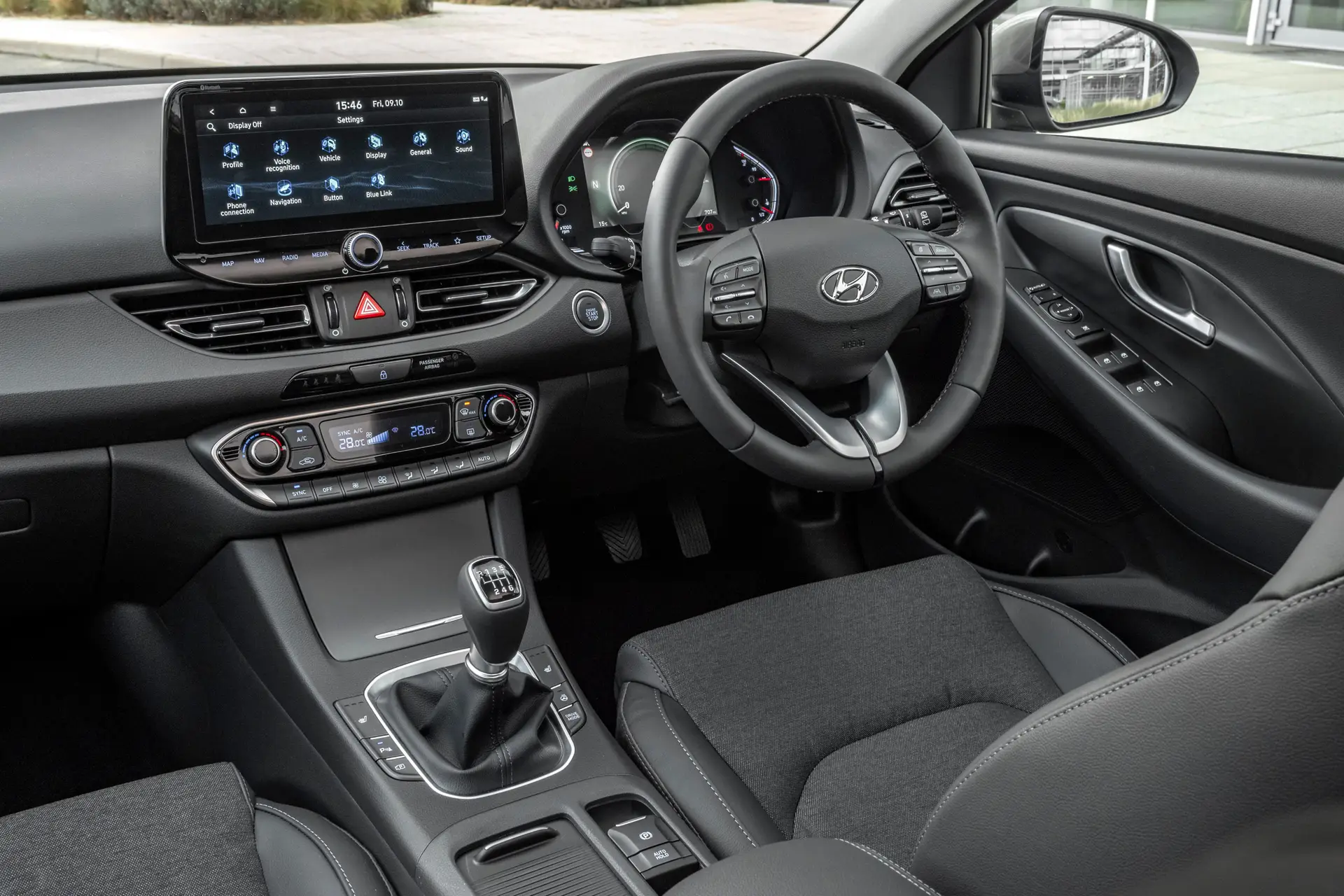
The Hyundai i30's seats are very supportive, no matter which model you buy, and there’s loads of adjustment in the driver’s seat and steering wheel, making finding a suitable seating position child’s play.
Adjustable driver’s lumbar support is standard on all (but wasn't for the entry-level pre-facelifted S model), as is driver’s seat height adjustment, allowing you to prioritise between a commanding driving position or feeling close to the road.
Premium models come with electric driver’s seat adjustment, which is particularly useful if there’s going to be more than one person driving your car. Simply take a seat, fiddle with a few buttons and voila - a comfortable seating position. You'll also get heated front seats and more upmarket part leather/cloth upholstery.
While the i30’s cabin isn’t going to win any awards for style, it’s not going to infuriate you, either. It’s functional and well laid out with lots of buttons logically positioned for easy, intuitive operation.
We’d recommend looking for an SE trim or above with its chrome interior trim, which manages to make the cabin look a bit smarter than the entry-level car. Of course, this no longer applies if you're looking at the facelifted model that starts with the SE Connect version.
Quality and finish
The Hyundai i30 isn’t as plush inside as a Volkswagen Golf or Mazda 3, but it feels well-finished and more than up to the task of withstanding family life.
It’s very dependent on specification. Entry-level S models felt pretty drab, with SE trim adding a leather-wrapped steering wheel and gear knob as well as the aforementioned chrome interior trim - both of which make the i30’s cabin feel that little bit more cossetting. That changed for the 2020-onwards facelifted model, which looks pretty high grade regardless of which trim level you go for.
The part- or full-leather seats of the higher-spec models also give the cabin a useful lift in terms of quality but, even then it’s not on a par with a Golf. None of the plastic finishes feel particularly brittle, though, and it certainly doesn’t feel like the budget option a Hyundai would have been a few years ago.
Infotainment: Touchscreen, USB, nav and stereo in the Hyundai i30
The infotainment is another area in which the older S trim will leave you wishing you’d plumped for a higher-spec model. The cheapest i30 didn't get a conventional touchscreen media system, instead making do with an old-fashioned radio system with buttons alongside. It looks pretty naff, perched on top of the dash and reminding you that you didn’t buy a pricier model. Used buyers beware.
It’s the sort of thing that’s acceptable on a cheap city car or supermini, but it’s not quite good enough on a car the size (and price) of a Hyundai i30. On the plus side, it does have DAB radio and Bluetooth connectivity - allowing you to make and receive phone calls on the move or stream music from your phone. If you don’t want the complication of a fancy touchscreen display, this is the car for you.
That doesn't apply to facelifted models, which at the entry level SE Connect trim get an 8-inch media touchscreen. That comes with Apple CarPlay and Android Auto as standard, too. Higher-end N Line and Premium models get a larger 10.25-inch infotainment system, which also bring sat-nav, and wireless phone charging for the Premium model.
Whereas the pre-facelift i30 was a bit behind-the-times in not offering any digital instrument display option, that is now offered as standard with N-Line and Premium models. This seven-inch display is still on the small side, however, while rival systems from the VW Group are more customisable.
Music fans might be disappointed, too - there’s no fancy premium sound system offered on the Hyundai i30, even as an option.
Space and practicality: Hyundai i30 boot space
The Hyundai i30 isn’t anything to shout about when it comes to interior space, but it is on a par with rivals like the SEAT Leon and Ford Focus. If practicality’s important, Hyundai does sell an estate version of the i30 (as well as a sporty Fastback model), but you should also consider something a bit bigger like the Skoda Octavia or even a crossover SUV like the Hyundai Tucson.
In terms of exterior dimensions, the Hyundai i30 is 4,340mm long, 1,455mm tall and 1,795mm wide. That makes it longer than a Volkswagen Golf and puts it on a par with the Ford Focus.
There’s a reasonable amount of room up front, with a height-adjustable driver’s seat allowing you to lower the seat if you require more headroom. This is missing on the passenger side on pre-facelift S models, but the rest of the range gets a height-adjustable passenger seat, too.
There’s plenty of storage, with generous cupholders, big door bins and - on most models - useful stowage space underneath the front armrest. Go for one of the N Line or Premium models and you’ll even get a sliding front armrest with a 12V power output socket.
In the back, tall adults will feel a bit cramped but no more so than in most rivals (this side of a Skoda Octavia, anyway). Like the Kia Ceed, there’s a near-flat floor, which means middle-seat passengers won't feel deprived of foot space. The same can’t be said for elbow room…
Wide-opening rear doors help when loading children, while the outer rear seats are fitted with Isofix mounting points which are easily accessible.
Capable of lugging 395 litres of luggage, the i30’s boot is the same size as the Kia Ceed’s, and marginally bigger than a Volkswagen Golf or Ford Focus. Access is easy thanks to a low lip and a variable-height boot floor, while the boot’s shape is usefully square. The rear seats drop easily, providing up to 1301 litres of space if required.
It’s worth noting that all but the old entry-level S model come with a space-saver spare wheel, which could save you a lot of hassle in the case of a puncture.
Handling and ride quality: What is the Hyundai i30 like to drive?
"The Hyundai i30 takes a comfort-biased approach, while means it floats over bumpy roads yet doesn’t feel as agile as a Ford Focus. It’s refreshing, actually, as most of us would rather a car like this transported us to our destination in comfort rather than make us feel like Lewis Hamilton."

Even with the bigger alloy wheels, the Hyundai i30's suspension isn’t really phased by less-than-ideal roads. It takes everything in its stride, only passing the harshest thuds and bumps into the cabin. In this respect it reminds us of the Volkswagen Golf.
It leans a bit in corners which isn’t conducive to preventing travel sickness for children in the back, but you soon learn to dial it back a bit and enjoy the comfort on offer. The steering feels pretty neutral yet safe, and it’s not going to run out of grip unless you’re very optimistic with your entry speed. If you are, it’ll simply run wide in a relatively controlled manner. In essence, it's predictable and stable, but you're very unlikely to want to take it for a drive just for the fun of it.
Decent forward visibility and relatively compact dimensions mean the i30 is an easy car to drive around town. The view behind isn’t great, but that’s true for most of the i30’s rivals, too. Fortunately, all but the most basic models get a very good reversing camera and rear parking sensors, which is very useful when backing into tight spots.
The i30 feels like a grown-up choice on the motorway, where the relaxed steering means it doesn’t dart around too much. The comfortable suspension, meanwhile, makes it feel like a much bigger, more premium car.
What engines and gearboxes are available in the Hyundai i30?
The 1.0-litre petrol is usually the cheapest on the used market. Don’t dismiss it because of its size - it’s a really peppy little engine which packs a decent punch and makes town driving a breeze. It’s ever so slightly slower in the Hyundai i30 compared to the very similar Kia Ceed, taking 11.2 seconds to reach 62mph, but it’s more than up to the job of keeping up with traffic, provided you don’t mind regular gear changes.
As of 2020, that engine uses mild-hybrid technology. It doesn't make the i30 any faster, but it does mean it has a more effective stop-start system, using a battery to recuperate energy and allow the engine to switch off entirely when coasting or braking to a stop. That saves fuel, and in normal driving you don't really notice it happening.
The manual gearbox, incidentally, is fine - not as precise as that used in the Ford Focus, but it does the job with a light change and effortless clutch pedal. Interestingly, for the facelifted model Hyundai has introduced something known as an Intelligent Manual Gearbox.
It's drive-by-wire, meaning there is no mechanical link between the gearshift and the gears themselves. Though this sounds odd, Hyundai claims it still feels natural, and it allows the new mild-hybrid engines to shut down while coasting or braking to a stop.
If you regularly drive on national-speed-limit roads, you might want the extra power of the bigger 1.4 as a used car option or the current 1.5. These are four-cylinder units which feel a bit more grown-up than the little 1.0-litre. With 140PS, the 1.4 will accelerate to 62mph in 8.9 seconds - plenty quick enough for building up speed on a motorway slip road or when overtaking.
The 1.5-litre engine has a healthier 159PS, which translates to a punchy 0-62mph time of 8.4 seconds. Both engines are also available with a dual-clutch automatic gearbox which is fine if you really want an auto, but not as smooth as the torque-converter transmission used in the latest Ford Focus.
We’d avoid the diesels unless you cover lots of motorway miles. If you do, the 1.6 CRDi is fine, if nothing special. Its low-down torque means there’s plenty of pull at low revs, but it’s no quicker than the petrols. It was discontinued in 2020, showing that most buyers also preferred the petrols.
Refinement and noise levels
Just like the Kia Ceed, the Hyundai i30 isn’t quite as refined as you might expect. There’s quite a considerable amount of road and wind noise, especially at high speeds. It shouldn’t be enough to put you off the i30, but drive one back-to-back with the class-leading Golf and you’ll notice the difference.
In typical three-cylinder fashion, the 1.0-litre unit makes quite a distinctive noise, particularly when it’s worked quite hard (something you’ll have to do to actually get anyway). It’s not unpleasant but is a little wearing, especially if you cover a lot of miles. It’s not helped by the amount of vibration that feeds back through the pedals and gear lever, either.
The 1.4 and 1.5 petrols are the most civilised, only making a distinctive noise at high revs - something you won’t have to do as much thanks to the extra torque on offer. Opting for one with the automatic gearbox won’t help refinement levels, though, as it sometimes gets flustered and selects a lower gear than is strictly necessary.
Like most diesels, the 1.6 CRDi makes quite a distinct grumble, but it isn’t really any noisier than alternatives like a diesel Ford Focus.
Safety equipment: How safe is the Hyundai i30?
The Hyundai i30 is loaded with standard safety equipment and, pleasingly, most of it is standard across the range.
All models get things like an autonomous emergency braking system (which’ll apply the brakes if it detects an impending collision), a lane guidance system which can nudge the steering if you start straying from your lane, and a driver attention alert to remind you when to take a break.
Premium models come with a blind spot detection system, which warns you if there’s a vehicle in your blind spot, and rear cross-traffic alert - which’ll notify you if there’s an approaching car when you’re reversing out of a space. Both useful features that could easily prevent a collision.
The Premium trim also has Lane Following Assist, which rather than simply nudging you away from the edges of the lane actually centres the car smoothly within the lane. This trim gets an intelligent speed limit warning, too, which reads the road signs and warns drivers if they're exceeding a new limit, as well as rear cross traffic collision warning and a safe exit alert.
If there is a crash, the Hyundai i30 is a very safe car. Euro NCAP awarded an impressive five stars (out of five) when it was crash tested in 2017. That includes an 88 per cent score for adult occupants and 84 per cent for children. Its pedestrian safety features were given a 64 per cent rating, while its safety assist tech was award 68 per cent.
MPG and fuel costs: What does a Hyundai i30 cost to run?
"While the pre-facelift i30 wasn't exactly thirsty, fuel economy has been noticeably improved on paper by the new mild hybrid systems fitted to every engine after 2020."
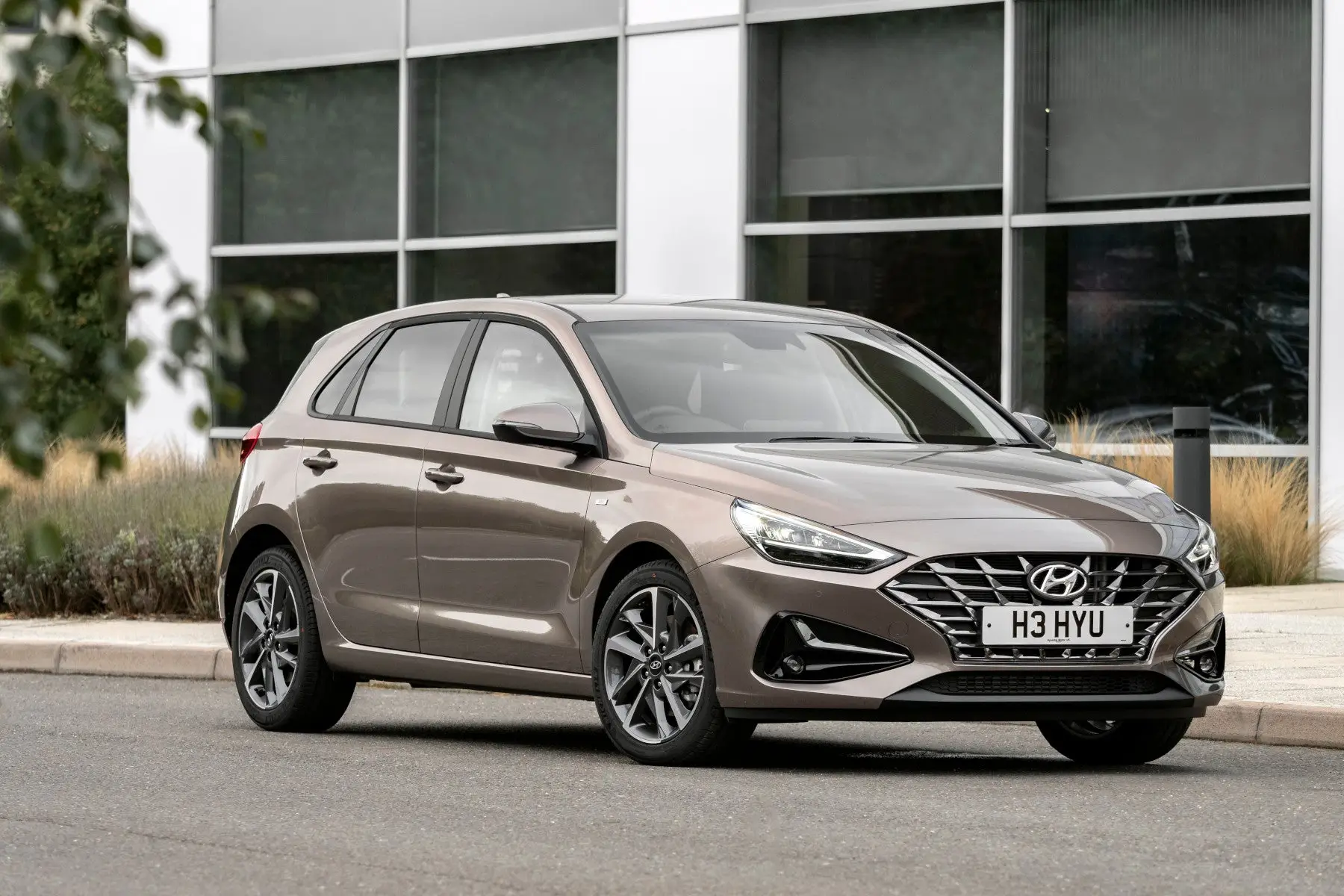
Hyundai ditched its most economical version of the i30 - the 60mpg-capable diesel - for the 2020 facelift. However, at the same time it added the new mild hybrid system to the two petrol models left, helping boost efficiency by as much as 10%.
Previously returning 49.6mpg on the combined WLTP cycle (depending on trim and wheel size) the 1.0-litre T-GDi now promises 54.3mpg, or 52mpg if mated to the dual-clutch transmission. This is obviously dependent on how you drive it - work it hard or only use it in busy towns and the little three-cylinder turbocharged engine will be considerably less efficient in the real world.
The old 1.4-litre petrol is a little thirstier, officially returning up to 44.1mpg, although you might find that the difference between the two petrols is negligible in the real world. The 1.4 is actually slightly more efficient with the DCT automatic gearbox, returning up to 45.6mpg.
The latest 1.5-litre with mild hybrid assistance is only slightly more efficient than the 1.4 on paper, but then it is a fair bit more powerful, With the manual, it promises 44.8mpg, rising to 46.3mpg when mated to the DCT automatic gearbox.
How reliable is the Hyundai i30?
Hyundai finished an impressive seventh place out of all the brands in the latest HonestJohn.co.uk Satisfaction Index. Clearly the Korean company is doing something right, and offering a five-year, unlimited mileage warranty as standard shows confidence in their own engineering.
As such, we reckon the Hyundai i30 should be one of the most reliable modern family hatchbacks on sale. Often the cars that aren't particularly exciting are, because the development time and effort some brands put into dazzling features or amazing performance can come at the expense of longevity.
Insurance groups and costs
The cheapest Hyundai i30 to insure will be the S model with the 1.0-litre T-GDi petrol engine. This falls into insurance group 8.
Aside from the hot i30 N, no i30 should cost a fortune to insure. You’ll pay a bit more insurance for the 1.4 petrol compared to the 1.0-litre, with the cheapest being an SE Nav or N Line model - both of which are placed in insurance group 14. Diesel insurance groups range from 11 to 13 depending on trim level.
Despite the fact that the equipment levels have risen and trims have been realigned, the 2020-on model appears to be broadly similar in terms of insurance groups and costs. Insurance groups start at 10 for the SE Connect and rise to 16 for the sporty N Line, while the top spec Premium actually sits a bit lower than the N Line in group 11.
VED car tax: What is the annual road tax on a Hyundai i30?
Under the latest car tax rules, you’ll pay a flat rate of £170 a year to tax a Hyundai i30 following the first registration as it qualifies for the hbrid car £10 discount. For the first year, you'll pay £210 for the 1.0-litre models and £260 for the 1.5-litre versions.
How much should you be paying for a used Hyundai i30?
"With the Hyundai i30 lacking the showroom appeal of a Volkswagen Golf, it represents very good value for money on the used market - especially as it comes with a transferable five-year, unlimited mileage warranty."
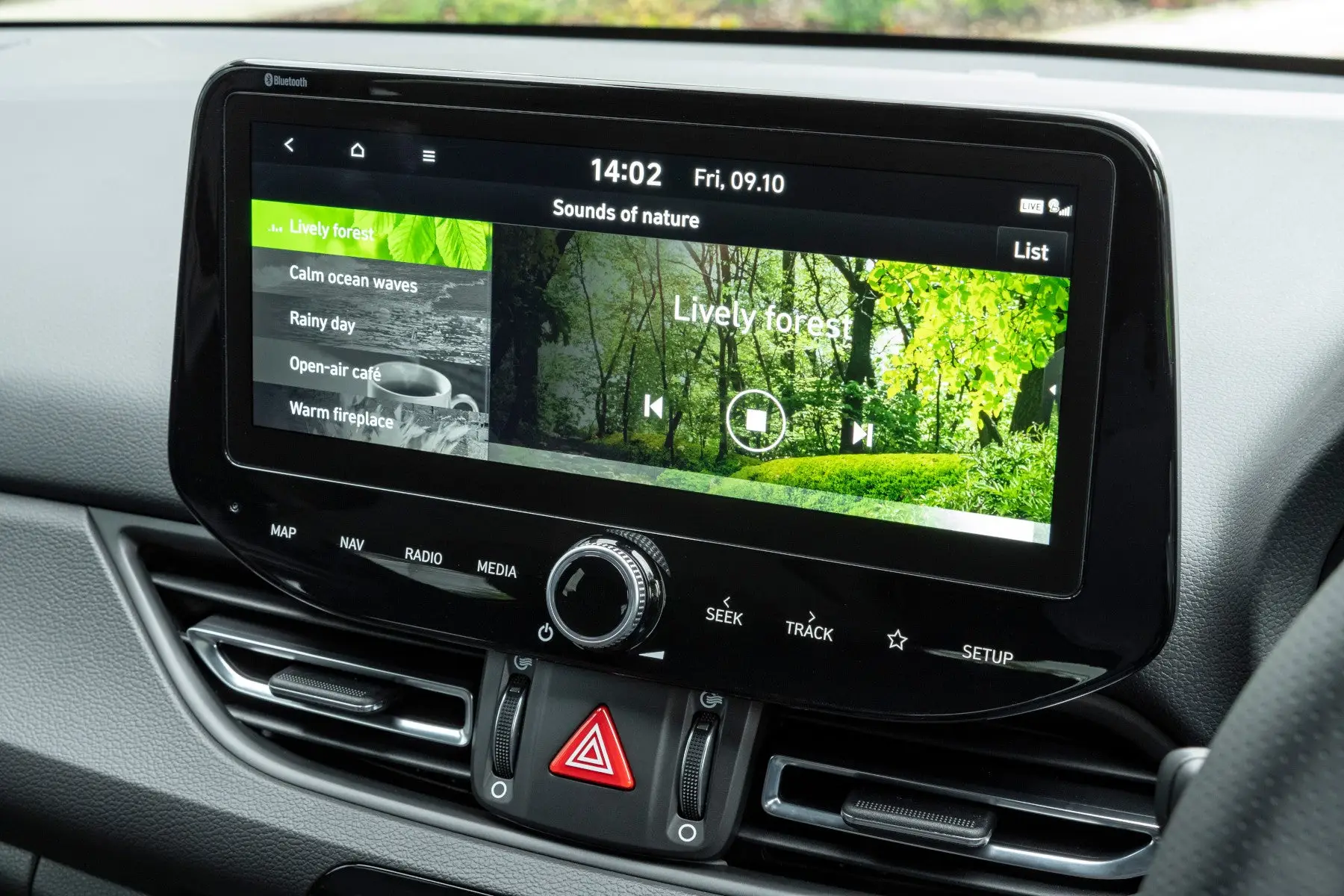
A budget of £10,000 will get you a seven-year old Premium model with the 1.4-litre petrol engine that has covered 50,000 miles. Diesel models are rarer and command a premium on the used market. You’ll pay around £11,000 for a similarly aged Premium trim version.
If you want an as-new car, we’d encourage you to look at pre-registered models. These are cars that have been ordered by dealers but are sold as-new, registered and ready to go. You can usually get a healthy discount compared to retail price and you’ll be able to skip the waiting list - although you can’t be fussy about the colour or options.
A three-year old i30 SE Connect with the 1.0-litre mild hybrid engine that has covered 30,000 miles will cost you around £15,000.
Trim levels and standard equipment
The pre-facelift Hyundai i30 range is pretty extensive. We’d avoid the cheapest S model unless it’s a really good deal - it’s pretty basic, with spec highlights including 15-inch alloy wheels, manual driver’s seat height adjustment, manual air conditioning, cruise control and DAB radio with Bluetooth connectivity.
An SE shouldn’t be considerably more expensive on the used market, adding desirable features such as 16-inch alloy wheels, a leather-wrapped steering wheel and gear knob, electric driver’s seat lumbar support adjustment, front passenger seat height adjustment, front and rear fog lights, front and rear armrests, electric folding door mirrors, a reverse parking camera with rear parking sensors and an eight-inch touchscreen media display with Apple CarPlay and Android Auto. If you want navigation, look for an SE Nav model - although we think Google Maps via Apple CarPlay/Android Auto does a better job.
Sporty N Line models add 18-inch alloy wheels (17-inches with the 1.0 120PS T-GDi engine), bespoke from and rear bumpers, N Line branding on the gear stick and steering wheel, N Line cloth seats, an auto-dimming rear-view mirror, door mirror puddle lights, LED rear lights and keyless entry with engine start/stop button.
N Line+ builds on this with a driver’s seat memory function (great if you regularly swap drivers), front passenger seat electric lumbar support adjustment, heated front seats, N Line leather and suede seats, climate control, automatic windscreen wipers and LED headlights.
Posh Premium models feature 17-inch alloy wheels, chrome window surrounds, driver’s electric seat adjustment, cloth and artificial leather seats, automatic front windscreen de-fog system, rear privacy glass, rear air vents on the centre console, solar glass, a front sliding armrest with 12V power outlet, automatic folding door mirrors, electronic parking brake with auto-hold function, front and rear parking sensors, 4.2-inch LCD driver’s supervision instrument cluster, navigation, wireless phone charging, a blind-spot detection system and rear cross-traffic alert.
Topping the range is the Premium SE, which builds on the Premium with full leather seats, a heated steering wheel and a panoramic sunroof. Fancy.
As of 2020, the trim levels were simplified to just three models: SE Connect, N Line and Premium. SE Connect is broadly similar to the previous SE model, missing out on the higher-end infotainment with sat-nav. N Line and Premium trims are basically identical to before kit-wise, but Premium SE is no longer available. Nor is full leather and a panoramic sunroof, which is a pity.
Ask the heycar experts: common questions
Is the Hyundai i30 a good car?
How much is the Hyundai i30?
What is the fuel consumption of a Hyundai i30?
Other popular reviews
Stay up to speed with great offers plus the latest car news and reviews
Keep me updated by email with the latest advice, news and offers from heycar.
By submitting you agree to our privacy policy


